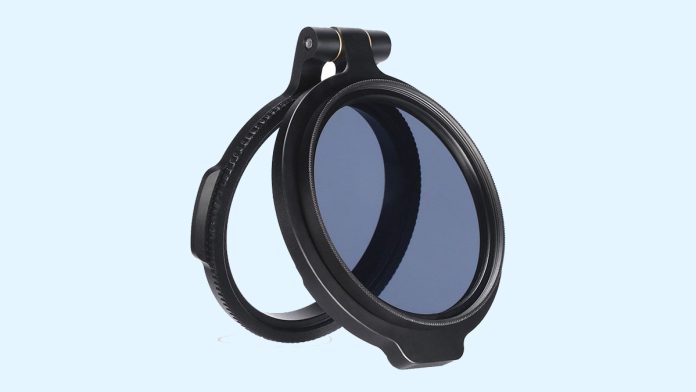Cinematic creativity demands precise light control, and ND filter systems are at the heart of achieving this mastery. By attenuating light without compromising color fidelity, these filters empower filmmakers to capture images with exceptional clarity and artistic depth. This article unpacks the intricate science and manufacturing processes driving ND filters, offering insights into both their optical and structural innovations. Exploring topics from optical density fundamentals to advanced integration techniques, we delve into the Physics and Engineering Behind ND Filter System in the cinematic equipments industry.
| Table of Contents | |
|---|---|
| I. | Optical Density & Light Transmission Fundamentals |
| II. | Light Attenuation Principles & Beer-Lambert Law |
| III. | Advanced Multi-Coating Technologies |
| IV. | Material Science & Substrate Engineering |
| V. | Spectral Neutrality & Color Accuracy |
| VI. | Polarization Effects & Wavefront Management |
| VII. | Innovations in Variable ND Filter Design |
| VIII. | Influence on Depth of Field & Creative Imaging |
| IX. | Thermal Management & UV Resistance |
| X. | Integration with Cinematic Lens Systems |
| XI. | Precision Manufacturing & Quality Control Protocols |
Optical Density & Light Transmission Fundamentals
ND filter systems in cinematic equipment rely on superior optical density to modulate light transmission. By precisely controlling the amount of light that passes through, these filters ensure optimal exposure and depth of field during filming. The careful balance achieved is a direct application of the Physics Behind ND Filter System, reinforcing the filter’s role in delivering consistent image quality across varying lighting conditions.
Light Attenuation Principles & Beer-Lambert Law
The Beer-Lambert Law underpins the exponential reduction of light in ND filters, ensuring predictable attenuation in cinematic applications. By quantifying light absorption, designers create filters that consistently diminish brightness while maintaining image clarity. This scientific principle allows for precise calibration of ND filter systems, ensuring that cinematographers achieve accurate exposures and creative control, even in challenging lighting environments.
Advanced Multi-Coating Technologies
Innovative multi-coating applications improve the durability and optical performance of ND filter systems. These coatings minimize reflections, reduce glare, and enhance overall consistency across cinematic lenses. This technical refinement is a testament to the Engineering Behind ND Filter System, where precise engineering solutions integrate with advanced optical technologies to meet the high demands of modern filmmaking.
Material Science & Substrate Engineering
ND filter systems depend on high-quality substrate materials engineered for optical clarity and resilience. The interplay of material science and substrate engineering ensures consistent light dispersion and structural integrity under varying conditions. In cinematic applications, these substrates support sophisticated coatings while resisting environmental stresses, ultimately safeguarding the performance and longevity of the ND filter system.
Spectral Neutrality & Color Accuracy
Achieving spectral neutrality is crucial for ND filters to deliver accurate color rendition. By uniformly attenuating light across the spectrum, these filters prevent undesirable color casts that could distort cinematic imagery. This balance ensures that color accuracy remains uncompromised, allowing filmmakers to capture visuals that are both vibrant and true to life, essential for high-end cinematic production.
Polarization Effects & Wavefront Management
ND filter systems must address polarization and wavefront integrity to prevent visual artifacts. By controlling the polarization of light, these filters maintain phase consistency and avoid distortions that can degrade image quality. Effective wavefront management ensures that even in high-resolution captures, the filters deliver uniform exposure and sharpness, solidifying their role in sophisticated cinematic imaging.
Innovations in Variable ND Filter Design
Recent innovations in variable ND filter design offer filmmakers dynamic control over light attenuation. Through innovative adjustment mechanisms, these filters allow seamless transitions between different exposure levels. This adaptability stems from an evolving understanding of the Physics Behind ND Filter System, integrating optical precision with versatile functionality to meet the ever-changing demands of creative cinematography.
Influence on Depth of Field & Creative Imaging
ND filter systems profoundly impact depth of field by enabling wider apertures and slower shutter speeds. This creative flexibility allows cinematographers to craft unique visual narratives, whether achieving a shallow focus for intimate scenes or expansive focus for detailed landscapes. By precisely modulating incoming light, ND filters empower filmmakers to push artistic boundaries and enhance storytelling through visual nuance.
Thermal Management & UV Resistance
Robust thermal management and UV resistance are essential for ND filter systems in demanding shooting environments. These features protect the filter from high temperatures and prolonged UV exposure, ensuring stable optical performance over time. By incorporating advanced thermal solutions and UV-resistant materials, the ND filter system remains reliable, maintaining its integrity and performance during prolonged field use.
Integration with Cinematic Lens Systems
Seamless integration with cinematic lens systems is key to maximizing ND filter performance. Precise alignment with lens optics guarantees high-fidelity light modulation and enhanced image quality. This integration process exemplifies the Engineering Behind ND Filter System, where meticulous design and compatibility converge, ensuring that ND filters become indispensable in delivering crisp visuals, even under challenging lighting conditions.
Precision Manufacturing & Quality Control Protocols
Precision manufacturing and rigorous quality control underpin every ND filter system component. Advanced fabrication techniques ensure that filters meet stringent optical tolerances while comprehensive testing maintains consistency across production batches. These strict protocols guarantee that each ND filter contributes reliably to superior on-set performance, solidifying its position as a cornerstone in the cinematic equipment industry.

